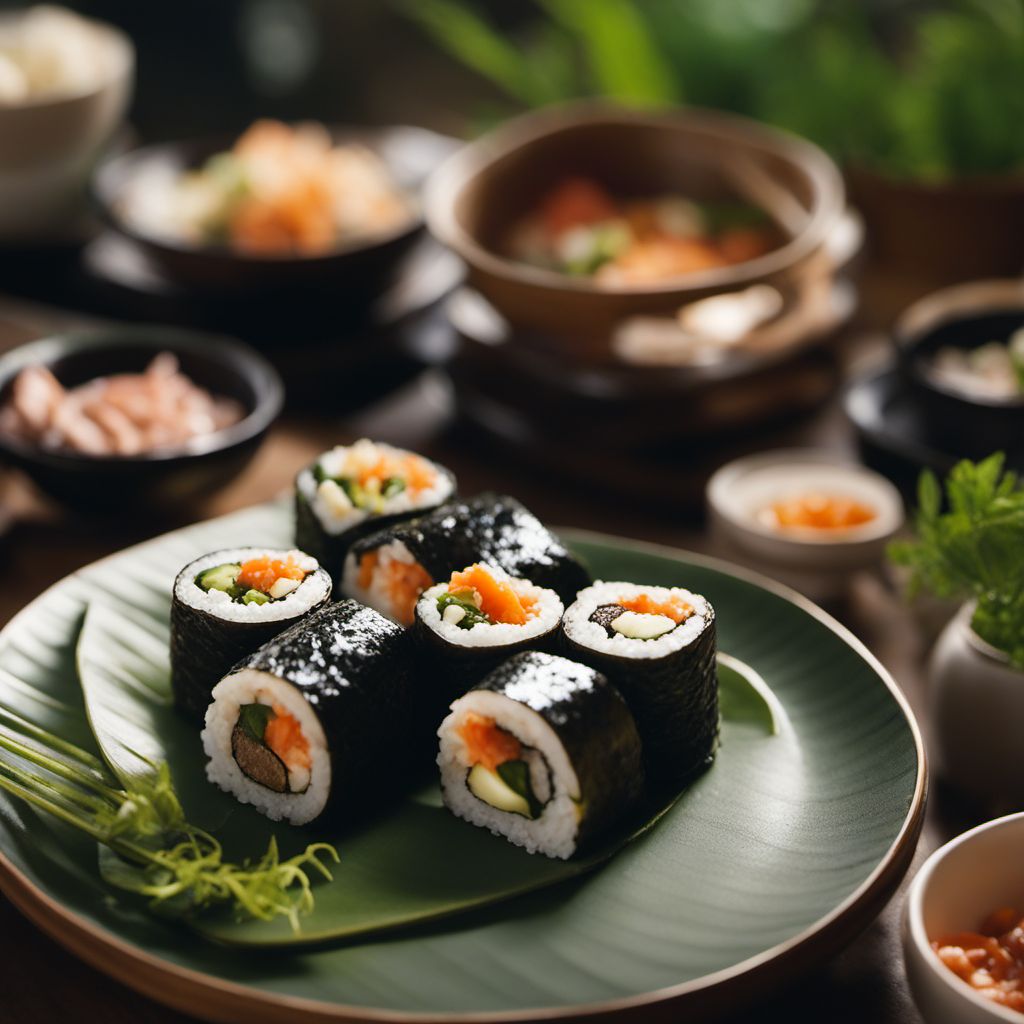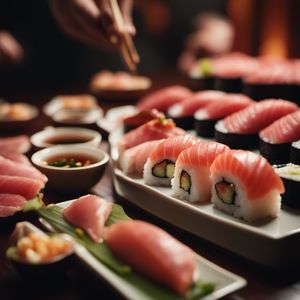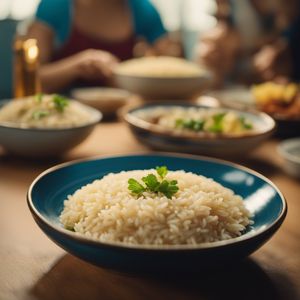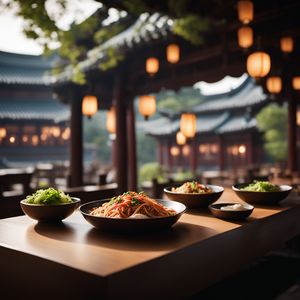
Dish
Kimbap
Kimbap is a popular Korean dish that is similar to sushi. The dish is made by spreading cooked rice on a sheet of seaweed, and then adding a variety of fillings such as carrots, spinach, and beef. The ingredients are then rolled up tightly and sliced into bite-sized pieces. Kimbap is a healthy and portable dish that is perfect for picnics or as a snack.
Origins and history
Kimbap has its roots in the Joseon Dynasty, which ruled over Korea from the 14th to the 19th century. The dish was originally made with only rice and seaweed, but over time, other ingredients such as vegetables and meat were added to the filling. Kimbap became a popular snack food in Korea in the 20th century and is now enjoyed throughout the world.
Dietary considerations
Kimbap is a high-carbohydrate dish that is relatively low in fat and calories. However, it can be high in sodium due to the soy sauce and other seasonings used in the filling. To reduce the sodium content, you can use low-sodium soy sauce and seasonings, or make your own filling using fresh ingredients. Kimbap is also gluten-free if you use gluten-free soy sauce and omit the filling ingredients that contain gluten.
Variations
There are many variations of kimbap, including tuna kimbap (made with canned tuna), cheese kimbap (made with melted cheese), and chamchi kimbap (made with tuna and vegetables). Some versions also include kimchi or pickled vegetables.
Presentation and garnishing
To make the perfect kimbap, be sure to use high-quality ingredients, including fresh vegetables and meat. It's also important to roll the kimbap tightly to prevent it from falling apart. Finally, be sure to slice the kimbap into bite-sized pieces for easy eating. Kimbap is often garnished with sesame seeds and sliced carrots.
Tips & Tricks
If you're new to making kimbap, start with simple fillings like carrots and spinach. As you become more comfortable, you can experiment with different ingredients and flavor combinations. Also, be sure to wet your hands with water or vinegar before handling the rice to prevent it from sticking.
Side-dishes
Kimbap is often served with a side of kimchi, pickled vegetables, or soup.
Drink pairings
Kimbap pairs well with green tea, soda, or beer.
Delicious Kimbap recipes
More dishes from this category... Browse all »

Aji nigiri sushi
Japanese cuisine

Akami nigiri sushi
Japanese cuisine

Anago nigiri sushi
Japanese cuisine

Arroz a la plancha
Spanish cuisine

Arroz a la tumbada
Mexican cuisine

Arroz al forn
Spanish cuisine

Arroz al jerez
Spanish cuisine

Arroz al olivar
Spanish cuisine


